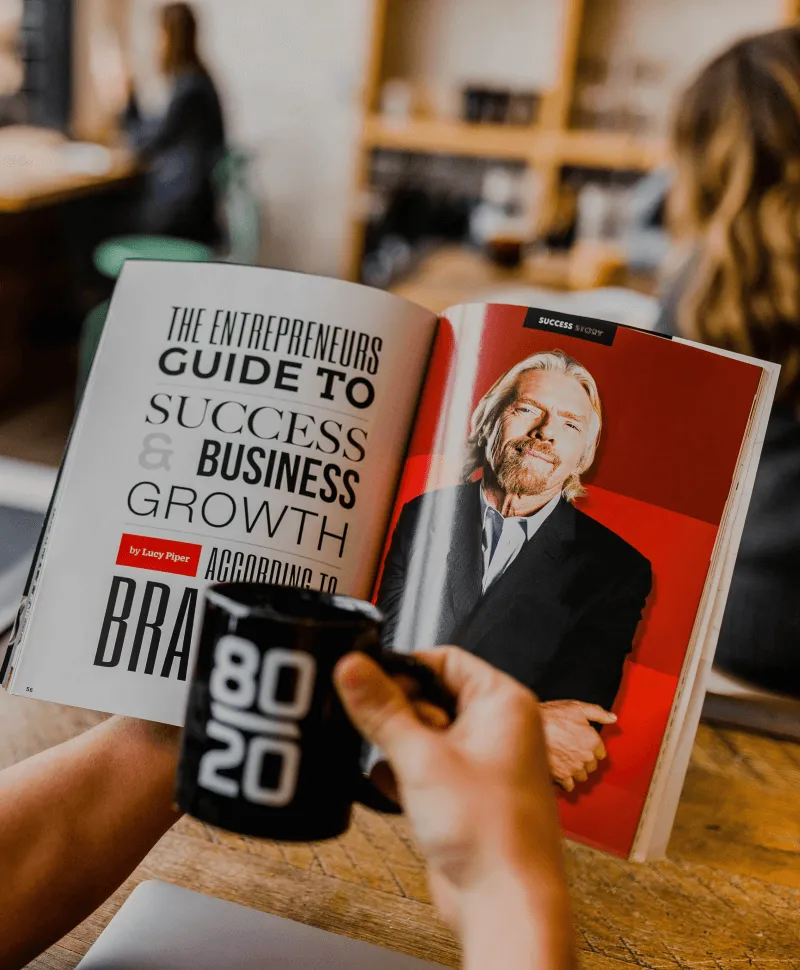Nigel Glenday: How Masterworks Leverages Market Intelligence to Enhance Art Investment
For a long time, blue-chip art has been a “passion investment” reserved for the ultra-wealthy, leaving most people out

For a long time, blue-chip art has been a “passion investment” reserved for the ultra-wealthy, leaving most people out of the loop. However, by fractionalizing investments in works by artists like Monet, Basquiat, and Kusama into affordable shares starting at $20, the Masterworks platform has successfully democratized access to this asset class.
While the business model itself has drawn significant attention to this New York-based unicorn startup, it’s the use of advanced data analytics that has enabled Masterworks to deliver impressive returns to its investors.
After spending a decade at some of the world’s top investment banks, Nigel Glenday transitioned to the art investment sector in 2015, taking on the role of Managing Director of Strategy at Athena Art Finance. Four years later, he joined Masterworks as CFO.
As a member of the Masterworks executive leadership team since the platform’s inception, you’ve witnessed significant evolution over the past five years. How has the company grown and changed since those early days, and what direction do you envision for its future?
Masterworks recently commemorated the unveiling of our first painting, which was four years ago. Since then, we’ve gone a long way. We have clarified what it means to invest in art as a result of this approach. We didn’t know at the beginning how much investor demand there would be for art as a class of investable assets.
We were so certain then, as we are now, that art was a great investment because of its past performance, potential to outperform inflation, and lack of association with other assets. However, investor demand remained completely speculative. We knew we had found our market when we swiftly followed up our mid-2019 Andy Warhol offering with a Banksy offering, both of which we launched and sold out.
Fast forward to today; we’ve expanded to over 400 individual painting investments, amounting to $1 billion, and have become one of the art market’s largest acquirers. We’re empowering a broad range of investors, whether individual or professional, to incorporate high-value, high-appreciation-potential artwork into their portfolios just like any other investable asset.
Our core mission is to make art investable and to establish Masterworks as synonymous with art investing. In the next five to ten years, the foundations we’re laying now will drive art as an investment across all portfolio types. Whether you’re investing in artwork directly through Masterworks.com, through a mutual fund with your advisor, or within an investment fund in a pension plan, Masterworks will be the engine behind it all.
Moreover, we have an incredible opportunity to share our growing art collection with the world. We’re already proud to see some of our masterpiece paintings featured in major museum exhibitions, and we have even more exciting plans in store.
As the Masterworks finance and data teams have expanded rapidly in headcount, how do you ensure they maintain a unified vision and continue to align with the company’s overall goals?
All members of the finance and data analytics teams should possess the same blend of technical skill sets, intellectual curiosity, and core knowledge. You must be the greatest at what you do, operate using 21st-century tools, and have a natural curiosity for how things work.
That’s how our finance team developed the technologies we use to securitize and oversee our 400+ artwork investment vehicles with global investors. Our data analytics teams are tasked with creating a framework that will enable investors to comprehend art in the same way they would any other type of investment. This framework will start with basic inquiries about the market’s historical performance and risk characteristics and progress to more complex predictive analytics.
A key element of Masterworks’ appeal lies in how you leverage data to pinpoint paintings with the highest potential for value appreciation. To achieve this, you’ve built your own database of paintings that have been resold. Could you share the conceptual origins of that database and discuss how you address the most significant challenges in keeping it up-to-date?
The good news is that the art market has always produced large volumes of data. This is one of the things that sets art apart from other collections, such as automobiles or sports memorabilia. For millennia, there has been a market for art, much of which is sold at public auction. Thus, we are able to see firsthand how much and when artwork is sold.
The first issue is that this data is not standardized or organized in any way that would be helpful to investors. You may access financial data for almost every other asset class via Bloomberg, Thomson Reuters, Yahoo Finance, and other similar platforms. For the arts? You have to trawl through libraries of auction catalogs and innumerable different auction websites (only for what is available online). The few available internet databases are not very helpful for investors and are mostly intended for specialists in the art market, such as appraisers.
So, it was obvious to us right away that we needed data in order to be able to support an investment thesis regarding the art market. We compiled it ourselves for that reason. Searching through auction catalogs dating back more than thirty years took more than a year in order to create a database containing all auction sales.
The second issue is that there are no two artworks that are alike, so how can we make a pricing index? Actually, every piece of art has certain “characteristic” qualities that make it distinct. This is not the same as stocks, where a single share of Apple common stock is identical to every other share. For this reason, building a stock index is a simple task. Regarding art, though, what say you?
There are well-researched methods for creating a price index for assets similar to artwork, such as residential real estate. Homes, like artworks, have distinct characteristics—they’re located in a specific place, have a certain size, and age, just as an artwork is created by a specific artist, has a particular size, and was painted on a specific date. To account for these differences, we observe how the same object, whether a home or an artwork, sells multiple times.
This method, known as the “repeat sales” approach to building a price index, addresses this challenge. By tracking how an artwork sells for one price at a certain date and then resells for another price later, we can calculate its price appreciation. When applied across tens of thousands of repeat sales, we can develop a price index that provides insights into how the art market appreciates as a whole.
For contemporary art, in particular, this approach has proven to be highly effective. Over the past 25 years, we’ve observed that contemporary art has appreciated by an average of 12.1% annually, or 1.9 times more than the S&P 500, with minimal correlation to the S&P 500. This finding has been crucial in shaping our investment thesis around art as a viable investable asset.
Masterworks has emphasized that, to maximize returns from blue-chip art, extended holding periods of up to ten years are often necessary. However, to showcase the platform’s value to users, some artworks have been sold much sooner, occasionally within a year. How do you balance these two approaches, and what financial modeling do you use to determine the optimal timing for selling assets?
We’ve intentionally structured our artwork investments as long-term capital appreciation vehicles, making them ideal for investors with an extended investment horizon. However, we’ve also built in the flexibility to sell artwork when opportunities arise to provide attractive returns for our investors, striking a necessary balance.
We constantly monitor transaction activity across all the artist markets we invest in, dedicating significant effort to estimating supply and demand—a challenging task! Crucially, we complement this quantitative data with the valuable market insights our acquisitions and private sales specialists gather daily as they engage with thousands of art market professionals and individual collectors.
We don’t have to guess about the art market because we’re actively involved in it. So, while we’re committed to holding our portfolio for the long term, when exceptional opportunities to sell arise that can deliver great returns to our investors, we want to be able to act on them.
How significant is an individual’s personal appreciation for art when your team evaluates the investment potential of a particular piece?
Zero. Our goal is to provide our investors with attractive returns that align with the market for high-end contemporary art. In doing so, we are intensely focused on learning what, why, and how the value of artwork changes over time. This is a data exercise first, then our amazing acquisitions and private sales teams’ in-the-field market knowledge have added to it.
Anything less would be a betrayal of investors, and our team’s personal tastes are unimportant.
In making art more investible, is Masterworks removing the personal passion for art from the equation, thereby transforming the asset class into something more akin to a commodity?
This question presents a false dichotomy. The elements that make art powerful, culturally significant, or engaging are not separate from its potential to increase in value—these aspects are inherently connected.
The data supports this view. Research from Deloitte indicates that most art collectors consider their collections from an investment perspective as well. It’s natural to view high-value purchases, like art, as assets. Thus, evaluating aspects such as value preservation, appreciation potential, and liquidity is fundamental. Art, as a passion asset, can be appreciated due to various factors, including its cultural significance and macro-economic influences such as the wealth of global ultra-high-net-worth individuals.
Masterworks does not alter this dynamic. We simply present the art market to investors, who approach it with an investment mindset, in a manner they can comprehend and act upon. In doing so, we are also building a generational art collection that we are excited to share with the art-loving public.









